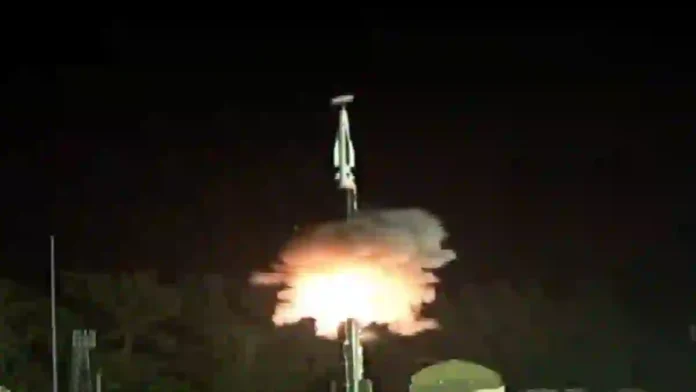India has quietly carried out several advanced missile tests in recent weeks as it continues its bid to become a military superpower. India has recently demonstrated its growing military capabilities with the successful test of its most advanced missile system to date, the Extended Trajectory Long Duration Hypersonic Cruise Missile (ET-LDHCM).
Developed indigenously by the Defence Research and Development Organisation (DRDO) under Project Vishnu, the ET-LDHCM represents a major leap in India’s strategic weapons technology, capable of striking targets up to 1,500 km away at speeds exceeding Mach 8 (approximately 6,000+ mph) in just over 3 minutes.
Read- How India’s New Deadly Artillery Gun ATAGS Can Now Strike Pak Targets Such As Lahore From Amritsar
Unlike traditional ballistic missiles, this hypersonic cruise missile flies at low altitudes using scramjet propulsion, enabling it to manoeuvre in flight and evade interception by current air defence systems.
This missile can carry either conventional or nuclear warheads weighing between 1,000 and 2,000 kilograms and can be launched from land, sea, or air platforms, increasing its strategic flexibility. The scramjet engine was ground-tested for 1,000 seconds in 2024 and demonstrated the ability to withstand extreme temperatures up to 2,000 °C, confirming its resilience at hypersonic speeds.
The ET-LDHCM test not only enhances India’s military deterrence but also signals an intention to rival other major Asian powers, particularly China. While India has traditionally emphasised “credible minimum deterrence,” the development of advanced hypersonic weapons signals a broadening of its strategic capabilities aimed to counter regional threats from both Pakistan and China.
Read- MiG-21 To Retire In September After 62 Years of Service
Read- Navy and Coast Guard Set To Induct Made-In-India C295 Transport Aircraft
The missile’s speed, maneuverability, and low radar profile bolster India’s ability to respond quickly and effectively to regional security challenges amid ongoing tensions, such as those arising from recent conflicts with Pakistan and border disputes with China.
India’s achievement places it among an elite group of nations—alongside the United States, Russia, and China—with operational or near-operational indigenous hypersonic weaponry, marking its emergence as a significant military power in Asia. This development also underscores India’s commitment to self-reliance in defence technology, strengthening its strategic posture in the Indo-Pacific region.
India’s most advanced missile test with the ET-LDHCM marks a strategic milestone by providing a highly sophisticated, rapid-strike, and hard-to-intercept hypersonic capability. This move fundamentally enhances India’s deterrence and sends a clear message of military strength aimed at balancing power against China and Pakistan in a complex and volatile regional security environment.
Based On Daily Express US Report
Agency




